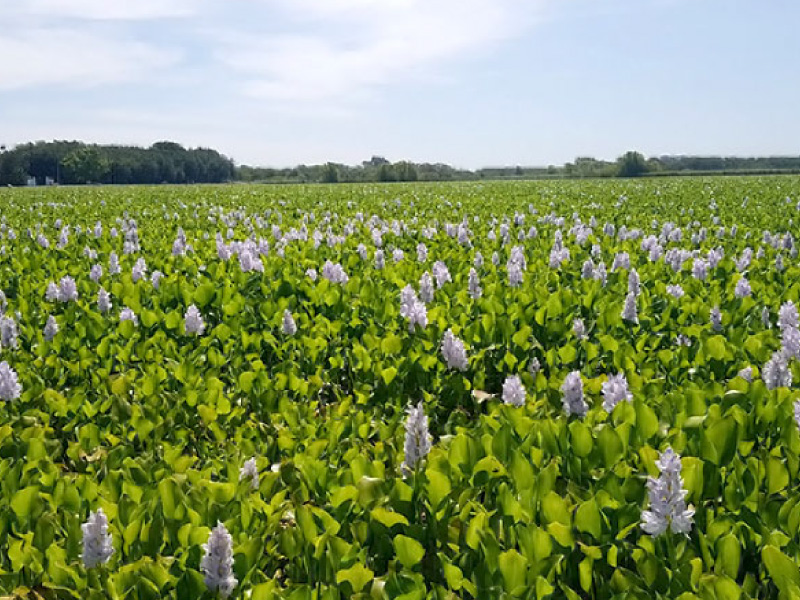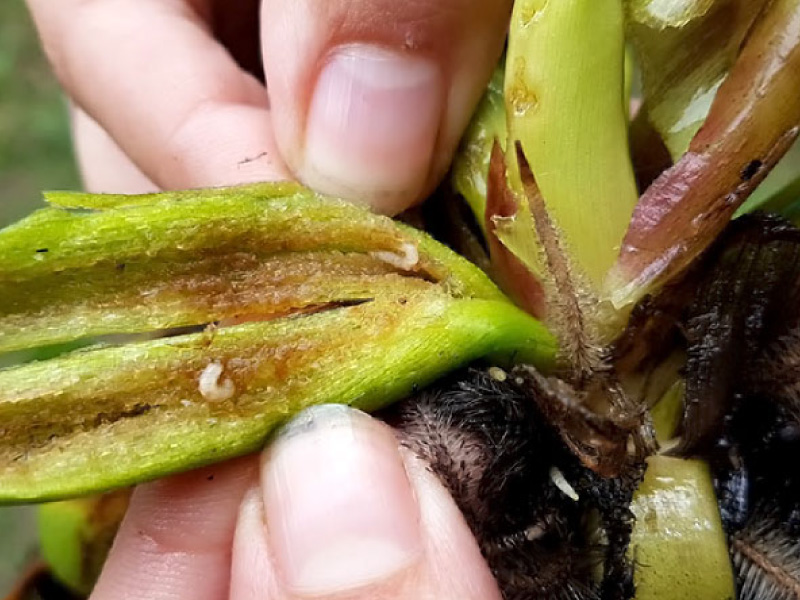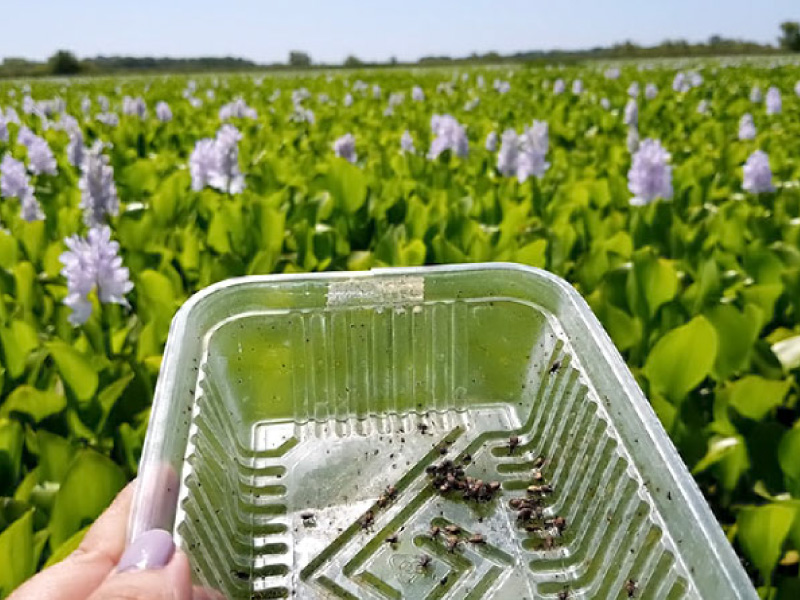21 May Pontederia crassipes (Water hyacinth)
Pontederia crassipes (Water hyacinth)
Water hyacinth is a floating and perennial plant, of high ornamental value. It was introduced worldwide from South America. It is currently considered one of the most invasive aquatic species due to its rapid growth and high dispersal capacity.
From the beginning of our institution, water hyacinth has been the object of study. Arthropods were identified and studied as potential biological control agents, highlighting the 6 that are currently used in several countries: Orthogalumna terebrantis (Acari: Galumnidae), Neochetina eichhorniae (Col., Curculionidae), Neochetina bruchi (Col., Curculionidae), Niphograpta albiguttalis (Lep., Crambidae), Xubida infusella (Lep., Crambidae) and Megamelus scutellaris (Hemiptera, Delphacidae).
Studies are currently being carried out to monitor the arthropod assemblies with the plant in natural environments and at two sites where control agents were released: 1- The Laguna del Ojo in San Vicente, Province of Buenos Aires (N. bruchi and M. scutellaris) and 2- the Los Sauces Dam in the Province of La Rioja, which constitutes the first record of biological control of plants in the country (1974) and the first time that N. bruchi was used for plant control worldwide. On the other hand, the role of climate change (temperature and CO2 concentration) for this species and some of its control agents is being studied to develop mitigation methods and adaptive management.
Staff:
Alejandro Sosa, Tomás Righetti, Ana Faltlhauser, Mariel Guala, M. Cristina Hernández
Cooperators:
Paul Pratt, ARS-EIWRU, Albany, California, EE.UU.
Phil Tipping, ARS-IPRL, Ft. Lauderdale, Florida, EE.UU
Ministerio de Ciencia, Tecnología e Innovación, Argentina
Martin P. Hill y J. Coetzee, Rhodes Univ., Sudáfrica
Ana Marino y Eugenia Brentassi, Universidad y Museo de La Plata, La Plata, Buenos Aires, Argentina
Celeste Franceschini, Centro de Ecología Aplicada del Litoral (CECOAL), Corrientes, Argentina.










